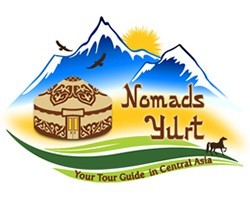Tajikistan tours
We offer you Tajikistan tours combined with other central Asian country tours. Order with us tours to Tajikistan.
Tajikistan
Tajikistan is the lost Sogdian kingdom, bordered by the Pamir range. The writings about the journeys of Alexander the Great, there is a mention of Sogdians. The nation that lived among the vast mountains of Central Asia, called the Sogdians. Sogdians were part of an ancient treaty of nations that believed in the prophet Zarathustra.
Zoroastrianism
It is a religion based on a prophecy and all about mankind’s situation in the universe. Adopted by the nomadic tribes, who did not build temples or carry idols. Zoroastrianism was the religion of the mountain peoples. Images of their gods were taken from the world of nature: wind, storm, rain, and sun.
They did not attribute a human figure to them, but rather, they remained abstract concepts. The same applied to bad spirits such as anger, lust, and dishonesty, which man must appease.
This religion developed in Sogdiana, where the first chapters of Avesta. Avesta is the holy book of the Zoroastrian faith was formed.
The residents of this area live in constant duality. Because there are hot deserts and the year-round snowy peaks. Day time there is extreme heat and, night’s are chill.
These people are peaceful agriculturalists in the oases, and also, they are combative nomads on the fringes of the deserts and plains. Living between the thriving cultural centers, with temples and castles, to the endless sands that bury everything.
This duality is reflected in their faith and metaphysics: the good and the bad, the violent and the demonic – the central axis in Zarathustra’s theology.
Aleksander the Great
It took Alexander the Great for about two years to conquer them. During that time he became one of them. Because he felt in love and married one of their daughters, Roxana.
In a small rural village in Tajikistan, whose mud huts integrate into the slope of the hill, the elders speak the language of the Sogdians to this day.
Residents:
In the area of the Yagnob Valley, the local residents maintain the religion’s customs and live by a special form of community life in their isolated villages, which become detached from the outside world every year for several months during winter, when the passes are covered by heavy snow.
When Tajikistan was still part of the Soviet Union in the 1970s, tens of thousands of the residents of the Yagnob Valley were forcefully transferred to the area of the Syr Darya river, to serve as workers in cotton picking. This human tragedy is also an ethnic and historical tragedy.
Snow-capped mountains of Pamir are higher than the Alps, the Rocky Mountains, and the Himalayas. Wherever you look, the mountains are always there, huge, impressive, and majestic. And in the background of a wild landscape
Dushanbe
The city’s uniqueness lies is its contrasts between tradition to modernity. Among bearded elders and women dressed in traditional clothing
Best season to visit:
The best time to visit Tajikistan is during spring, from April to June, or in autumn, from September to October. We recommend avoiding treks in the harsh winters of Tajikistan, between December to March.
Independence:
Tajikistan was previously part of the Soviet Union until it won its independence on September 9, 1992
Capital: Dushanbe
Currency: Somoni
Coordinated universal time: UTC + 5
International dialing code: +992
Neighboring countries:
Afghanistan to the south
China to the east
Kyrgyzstan to the north
Uzbekistan to the west and north
Major languages:
Tajik
Uzbek
Russian
Religions:
Sunni Islam: 85%
Shiite Islam: 15%
Orthodox Christianity: 9%
Other religions: 3%


